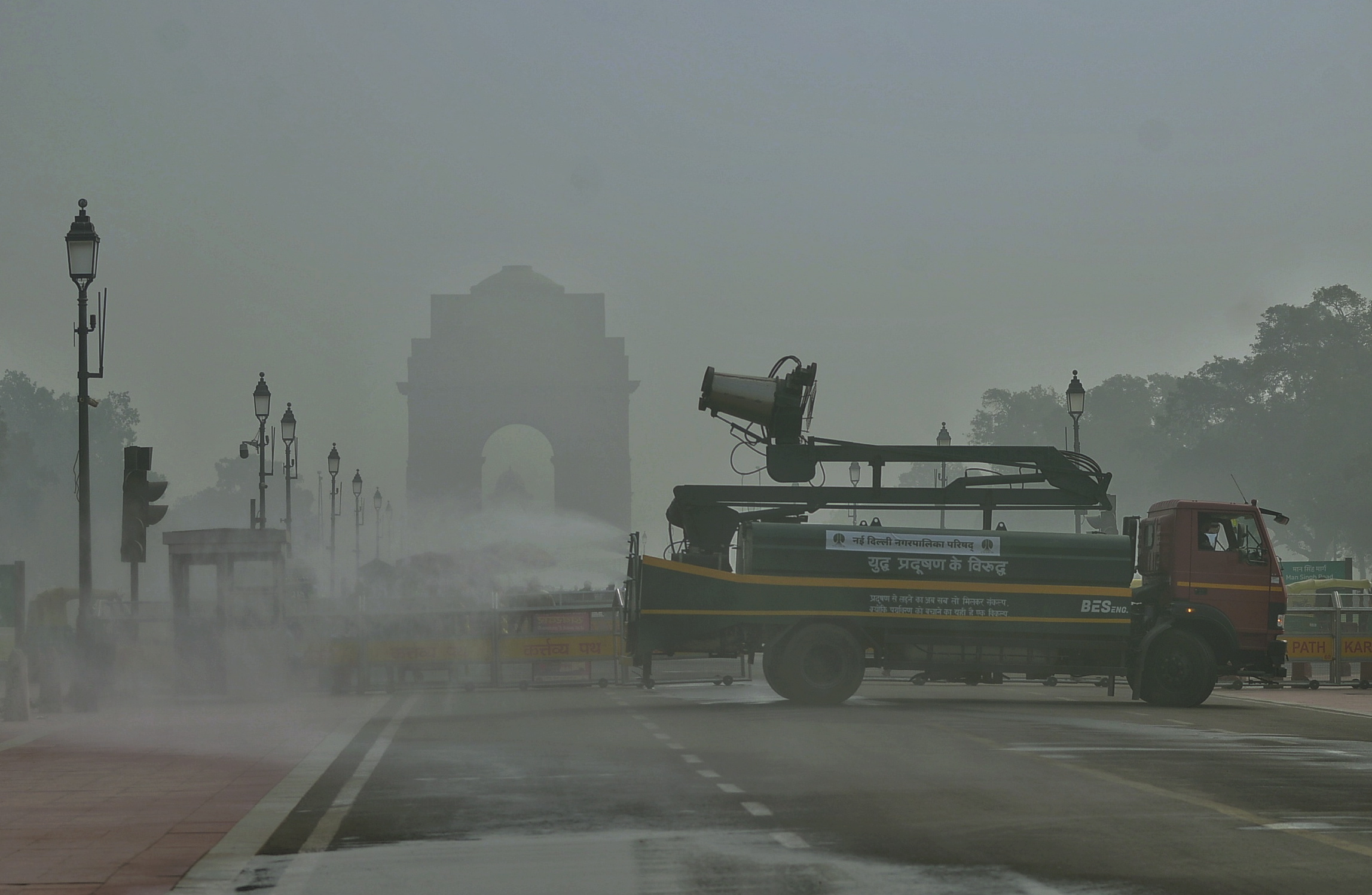- Thursday, April 03, 2025
The Commission for Air Quality Management imposed GRAP Stage III as the national capital recorded the worst pollution levels in the country

By: Shajil Kumar
DELHI government has ordered all primary schools to cease in-person classes until further notice as the city’s air quality remained in the “severe” category for the third consecutive day.
“Due to rising pollution levels, all primary schools in Delhi will be shifting to online classes, until further directions,” chief minister Atishi announced on social media platform X.
The Commission for Air Quality Management (CAQM) imposed GRAP Stage III as the national capital recorded the worst pollution levels in the country.
Prior to entering the “severe” category, Delhi’s air quality had been in the “very poor” range for 14 consecutive days.
According to the Sameer app, the Air Quality Index at 9 am on Friday was recorded in the ‘severe’ category (400 to 500), with a reading of 411.
Levels of PM2.5 pollutants – dangerous cancer-causing microparticles that enter the bloodstream through the lungs – were recorded more than 50 times above the World Health Organization’s recommended daily maximum on Wednesday.
The CAQM directed the authorities in Delhi-NCR to invoke curbs under stage III of the anti-pollution plan with immediate effect.
Curbs under Stage III include a ban on non-essential construction and demolition, closure of stone crushers and mining activities in Delhi-National Capital Region (NCR).
Under the Stage-IV restrictions of GRAP, all inter-state buses from NCR states — except electric vehicles, CNG vehicles and BS-VI diesel buses — will be prohibited from entering Delhi.
Meanwhile, out of 39 monitoring stations in Delhi, a total of 27 stations recorded air quality in the ‘severe’ category, with readings above 400.
More patients flocked to hospitals, particularly children.
The city recorded its lowest minimum temperature (night-time temperature) of the season at 15.6 degree Celsius, 2.6 notches above normal, according to the weather department.
The night-time temperature on Thursday was recorded at 16.1°C, the second highest of the season so far.
A thick veil of fog blanketed the city, reducing visibility at Safdarjung to 400 metres at 7 am on Friday.
Humidity was recorded at 98 per cent at 8:30 am.
The weather department has forecast very dense fog for the day, with the maximum temperature expected to settle at 29 degrees Celsius.
Punjab, Haryana affected
The Union Territory of Chandigarh and several places in Haryana on Friday recorded very poor air quality while in neighbouring Punjab the situation was comparatively better.
Chandigarh recorded the AQI at 327 at 10 am, according to the Central Pollution Control Board’s Sameer app, which provides hourly updates.
On Thursday, Chandigarh, which is the common capital of Haryana and Punjab, witnessed its AQI plunging to the ‘severe’ category for the first time in the season.
The air quality in several parts of Haryana was also recorded in the very poor bracket on Friday.
Fighting pollution
Government trucks are regularly used in Delhi to spray water to briefly dampen the pollution.
A new scheme unveiled this month to use three small drones to spray water mist was derided by critics as another “band-aid” solution to a public health crisis.
A study in The Lancet medical journal attributed 1.67 million premature deaths to air pollution in the world’s most populous country in 2019.
The choking carbon smog across New Delhi and other parts of north India came as researchers warned that planet-warming fossil fuel emissions would hit a record high this year, according to new findings from an international network of scientists at the Global Carbon Project. (Agencies)